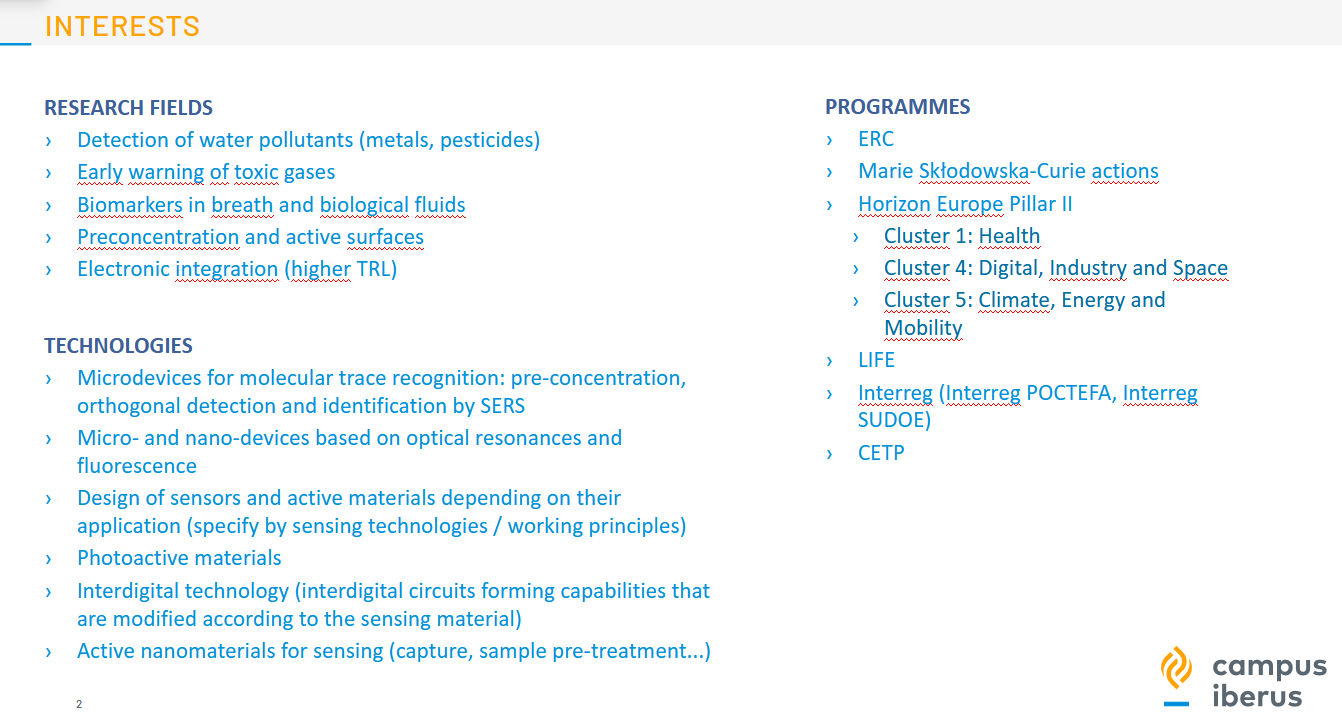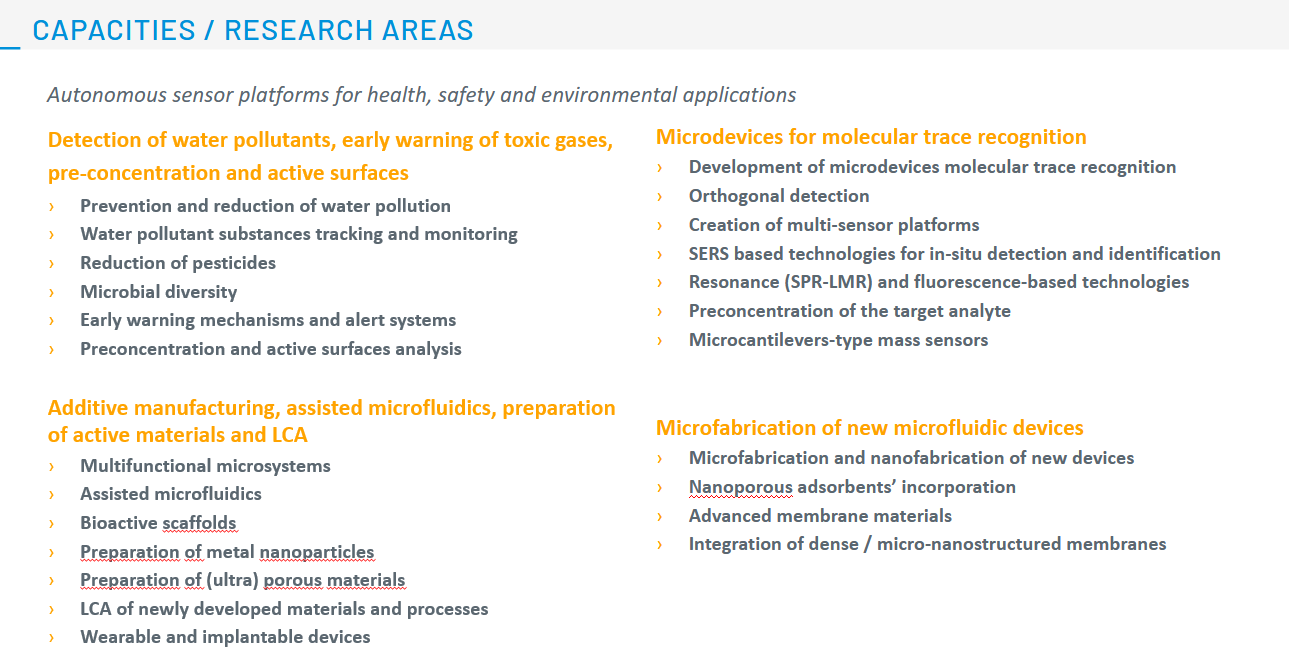SENSORS
AUTONOMOUS SENSING PLATFORMS FOR HEALTH, SECURITY AND ENVIRONMENTAL APPLICATIONS: ASAP
Description:
The two most important qualities of a gas sensor are its sensitivity (defined as the capability of sensing ever smaller amounts of a given compound) and its selectivity (the ability to respond only, or at least predominantly, to certain components in a mixture, and not to others). It is clear that the progress achieved during the last decade in terms of sensitivity has been outstanding, with ultra-sensitive nanoelectromecanical devices (NEMS) now reaching attogram level resolution. However, comparable advances have not been achieved regarding sensor selectivity, and therefore the sensing of a specific component in a gas mixture where other components may interfere still remains a challenging task. This is especially important given the increasing demand for sensors capable of discriminate specific components in complex mixtures, and has prompted a strong research effort in this direction. Very recent examples of investigations addressed to the development of sensor systems capable of analysing mixtures in the food, safety/security, health, process control and environmental monitoring fields can easily be found in the literature.
Sensors based on MEMS technologies and smart sensors are at the focus of the current sensor development. Only MEMS technologies make it possible to mass produce sensors more and more cost-effectively while improving their functionality and miniaturizing them. Current sensors are bulky, need interdisciplinary know-how of physics, chemistry, analog and digital electronics and software development in order to design a product. Certainly the required knowledge is too wide and complex for most systems engineers.
This action group clusters researchers from the University of Zaragoza and Public University of Navarre.

Research lines:
This cluster aims to develop innovative applications of existing knowledge and technologies and create new opportunities in the following market segments: smart cities, smart environment, security, public safety and emergencies, eHealth and life science.
The main activity of the involved research groups pivotes on the development of microsensors for the detection of outdoor and indoor pollutants (such as ozone, CO, NOx, VOCs, NH33 Hg), breath markers (VOCs, NOx) for diagnosis and early detection of diseases, and identification of species related to the presence of explosives and chemical & biological warfare agents.
For the manufacture of these microsensors, the action group has extensive experience both in the synthesis of sensing materials by means of bottom-up and top-down technologies, capable of discriminating target species from possible interferences with very high sensitivity; and in the manufacturing of transducer platforms responsible for the analyte-sensitive material interaction signal conversion to electrical output signal. The microdevices are manufactured using the vast experience of the consortium in micro and nanofabrication technologies and the already available facilities astructures to carry out the development of these sensors in a totally independent way.

Members:
University
- María Pilar Pina Iritia (Principal Investigator, Universidad de Zaragoza)
- Francisco Javier Arregui San Martín (Coordinator, Universidad Pública de Navarra)
- Fernando Bimbela Serrano _ Universidad Pública de Navarra
- Belén Calvo López _ Universidad de Zaragoza
- Jesús María Corres Sanz _ Universidad Pública de Navarra
- Luis María Gandía Pascual _ Universidad Pública de Navarra
- Nicolás Medrano Marqués _ Universidad de Zaragoza
- Ismael Pellejero Alcázar _ Universidad Pública de Navarra
- Eduardo Llobet Valero _ Universitat Rovira i Virgili
- Carlos Ruiz Zamarreño _ Universidad Pública de Navarra
- Miguel Ángel Urbiztondo Castro _ Universidad de Zaragoza
- Diego Sanz Carrillo_Universidad Pública de Navarra
Other entities:
- Universitat Rovira i Virgili
